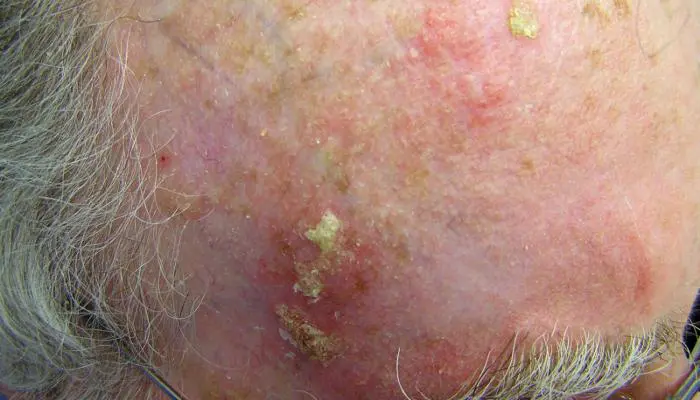Actinic Keratosis
Medical Dermatology
Actinic Keratosis, or AKs, is also referred to as solar keratosis or senile keratosis. AKs is a patch of skin that can be thick, scaly, and crusty that occur on those who frequently are in the sun or go to tanning beds. When the skin is badly damaged from ultraviolet (UV) rays, and cannot repair itself, AKs will form.
Signs and Symptoms
Most people who suffer from AKs do not actually exhibit any symptoms, but notices changes in their skin. The symptoms to watch out for are:
- the skin feels rough to the touch even though there is no discoloration
- if the rough skin feels painful when touched or rubbed
- when a patch of skin itches and burns regularly
- if your lips are constantly dry
These symptoms, as well as an AK itself, can disappear after a while, or come and go. It is important to still have check ups because AKs are known to return in a few days or even a few weeks, especially after spending time outdoors without sun protection. The damage from AKs can grow deeper into the skin which can cause cancer. That’s why it’s so important to see a dermatologist if you see any of these symptoms, even if the AK disappears before your appointment.
Causes
AKs are caused by ultraviolet rays. If you have an outdoor job, spend a large amount of time outdoors, or go to tanning beds, you are at higher risk of getting AKs. Everyone’s skin gets damaged by the UV rays from the sun. The difference is when we’re younger our skin heals itself faster. As the damage piles up with age, skin conditions like AKs can appear.
Some traits make AKs more common such as:
- Fair skin
- Natural blond or redhead
- Natural blue, green, or hazel eyes
- Prone to freckles or sunburns
- Over the age of 40
- Weakened immune system caused by disease or organ transplants
- Sensitivity to UV rays
- Working with coal or tar or other polycyclic aromatic hydrocarbons such as roofers
- Living in an area with intense sunlight all year light California or Florida
Treatment
A dermatologist can diagnose an AK with a simple examination. If anything in the exam appears to be skin cancer, a biopsy will take place. There are many at home and in office treatment for AKs and many patients use a combination of treatments. It’s best to have your dermatologist decide what is ideal for you and your situation. Common treatments include:
- Curettage: An instrament called a curette is used to remove the AK
- Cryotherapy: Visible AKs are destroyed by freezing them away.
- Photodynamic therapy (PDT): A blue light therapy is used after a solution is applied to the troubled area that makes the skin sensitive to light. The blue light activates the solution.
- Chemical Peel: These medical peels are different from what you can get at a spa because it’s a lot stronger and can destroy the top layer of skin.
- Prescription medication
After all these treatments, new and healthy skin regrows in place of the AK.

















